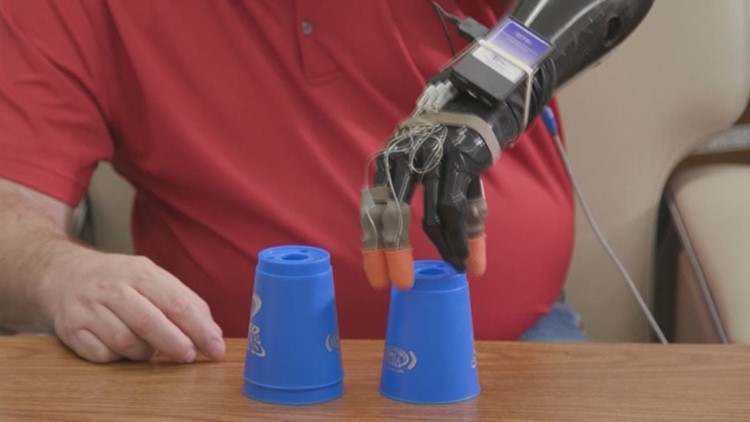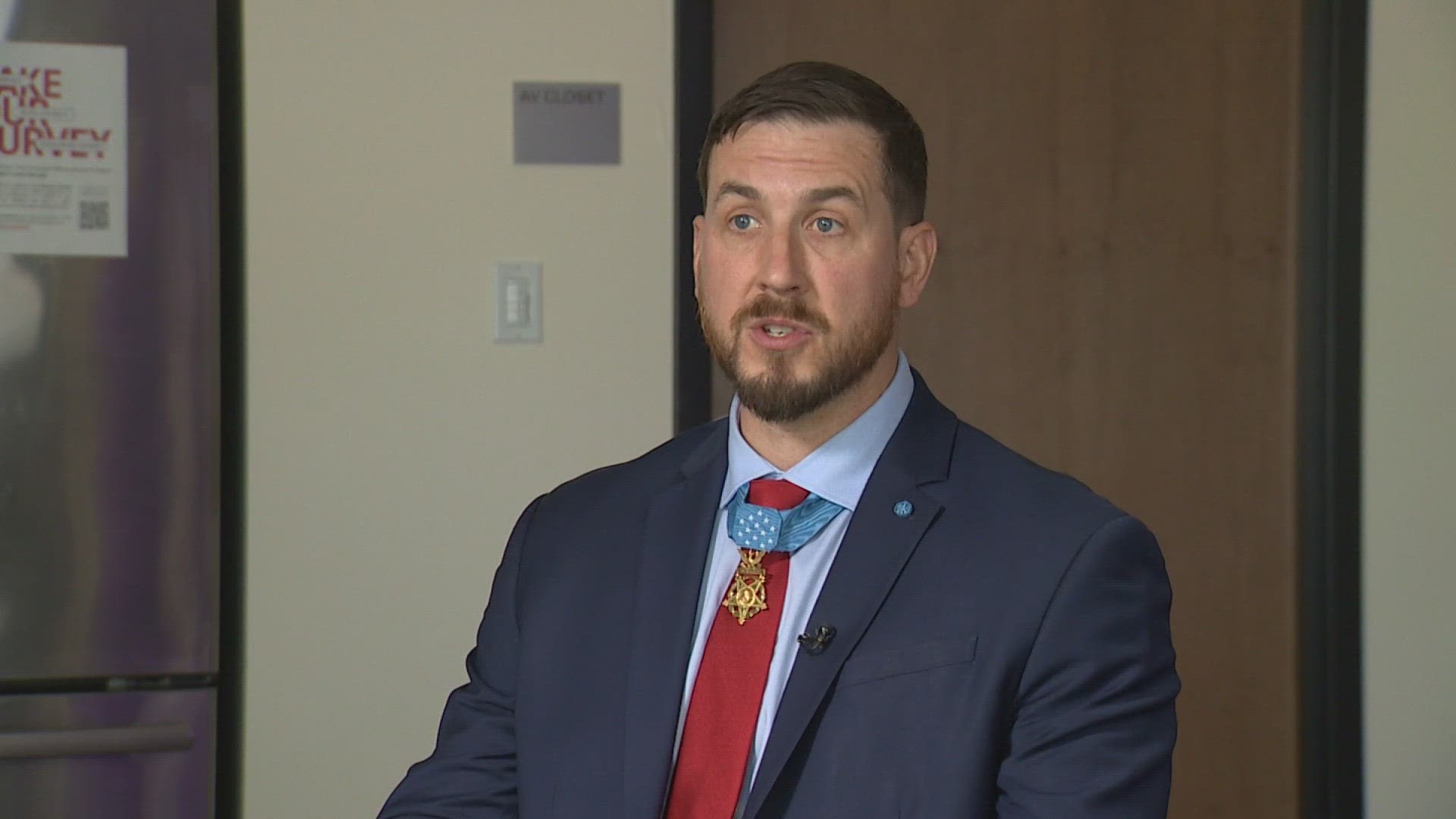Amputees may soon be able to feel things again with their robotic hands.
Undergoing tests at the University of Texas Southwestern, Shawn Findley for the first time in twelve years can feel with his hand again.
"To close your eyes and to grab something with a hand that you no longer have, but to be able to feel. You know the hand's not there, but then now you're feeling with it, it's just mind-blowing," Findley said.
The 44-year old Army veteran lost part of his hand at an accident in a fabrication shop. But 13 reconstructive surgeries later and still in tremendous pain, he chose to have doctors amputate his entire hand and part of his forearm.
"It was probably the best decision, medically for me. Because that was in '09 and here it is almost ten years later, I don't hurt. I'm not on any type of medicine. My way of life, my personality is back. I'm not over-medicated," Findley said.
Findley says he embraced life with his prosthetic, but then last year he was offered an incredible opportunity: Help doctors create a robotic hand that moves and provides sensation like a natural hand.
"I’m of the mindset that if it's beneficial to humanity, it's worth it," Findley said.
The research division of the Department of Defense is funding the trial and the goal is to improve the quality of life for wounded warriors.
With the funding, doctor Jonathan Cheng has researched ways to communicate with the residual nerves inside the arm of an amputee.
"Whenever we deliver electrical stimulation into those nerves, we actually are able to give the sensation of feeling and in many cases, the sensation of movement," said Cheng, an associate professor of plastic surgery at UT Southwestern.
At the start of the three-month trial, Cheng's team implanted electrodes on two nerves inside Findley's arm and then over time they used a circuit board to increase stimulation to those nerves.
"I was always one of those that says, 'Let's take it to the limit! I want to know what the max feels like.' You go for 12 years of not feeling. I want to experience it all," Findley said.
Now the next step is to build a robotic arm equipped with this technology.
"In an ideal world, the goal would be to help anybody who has an amputation like this,” Cheng said.
But Findley says he's especially excited about what it could mean for military men and women.
"I've got a son that serves in the Marines, and with all of our soldier boys coming back with all of the damage, we need to take care of those guys," Findley said.
Contributing to science so others can feel once again.
The technology will need FDA approval, but it could be on the market in as little as three years.



